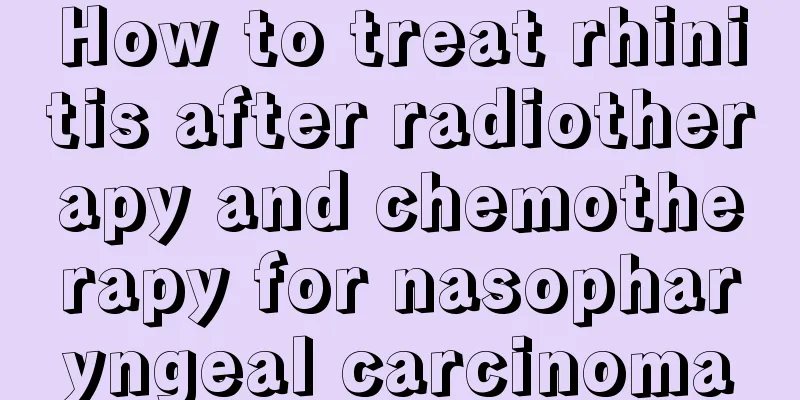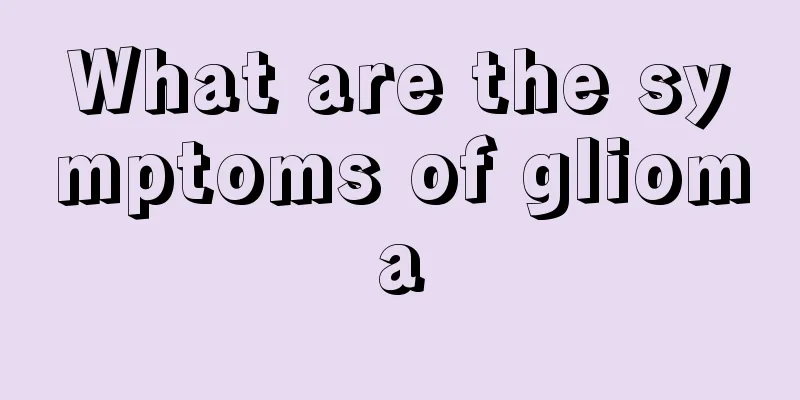What to do if you have a headache after nose bleeding

|
Nose bleeding is a very common situation in people's daily life. There are many reasons for this situation. It may be caused by getting angry or it may be caused by external force. In the face of this situation, people need to pay special attention to it. Some people will have a headache after nose bleeding. This is very likely caused by the brain and needs people to take timely measures to deal with it. The following is a detailed introduction on how to deal with a headache after nose bleeding. Headaches may be caused by sinusitis, which can lead to nasal bleeding. Nose bleeding can also be caused by many reasons, such as rhinitis, nasal vascular malformations, nasal polyps, etc. Suggestions: It is recommended to conduct a comprehensive examination as soon as possible to identify the causative factors. CT and nasal endoscopy can be performed. After the diagnosis is clear, further treatment methods can be selected. treat [Treatment policy] Improve symptoms, prevent complications, improve local drainage, and restore the normal physiological function of the sinuses. [Drug treatment] Acute sinusitis: Use sufficient antibiotics to control infection. Since most of them are coccal infections, penicillins and cephalosporins are the drugs of choice. Drug treatment emphasizes the selection of sensitive antibiotics and their use in sufficient doses and for sufficient courses. If the headache or local pain is severe, sedatives or analgesics may be used appropriately. General treatment is the same as for acute rhinitis. Traditional Chinese medicine treatment focuses on dispersing wind and heat, and aromatically opening the orifices, supplemented by detoxification and removing blood stasis. [Surgical treatment] ① Acute sinusitis: When drug control is unsatisfactory or complications occur, endoscopic sinus surgery can be used to directly reach the lesion through endoscope guidance, open the sinus opening, remove the lesions, improve local drainage, and then restore the normal physiological function of the sinuses; ② Chronic sinusitis: Endoscopic sinus surgery is currently the preferred method. Under the clear vision of nasal endoscope, all sinus lesions are completely removed, the sinus ostia are fully opened, sinus drainage is improved, and normal tissue is preserved as much as possible. It is a minimally invasive surgery that preserves function as much as possible. Others include maxillary sinus endonasal window surgery, maxillary sinus radical surgery, intranasal ethmoid sinus resection, external ethmoid sinus resection, frontal sinus drilling, frontal sinus incision, sphenoid sinus incision, etc. |
<<: Is daily cough a hot cough or a cold cough?
Recommend
I have acne on my face at the age of 40
If a normal person develops skin diseases such as...
Where are the aortas in the human body?
The aorta, which people often talk about, is also...
How to treat varicose veins in the lower limbs?
Varicose vein ulcers in the lower limbs are also ...
What is the reason for high ketone bodies in urine routine
Do you know the reason why ketone bodies are high...
Symptoms of urinary tumors
The urinary system is one of the most important s...
What is the difference between acne and pimples?
Some people cannot distinguish between pimples an...
How to make bananas ripen quickly
Bananas are a relatively common fruit and are ver...
This is the case with swollen feet due to high blood pressure
Hypertension is a common disease in life, which i...
What are the symptoms of prostate cancer? What factors are related to the onset of prostate cancer?
Prostate cancer is a disease that seriously endan...
During the Rain Water solar term, you should pay attention to the recipes for clearing heat, moistening dryness and relieving spring fatigue
Rainwater is the second solar term among the 24 s...
What kind of anti-inflammatory medicine should I take for trachoma
Due to the neglect of eye health issues, a series...
How to perform gynecological examination for ovarian cancer
I believe that many of my friends are familiar wi...
Can I apply sunscreen while swimming?
Doing a good job of sun protection is a basic way...
Does a woman’s waist hurt when she lies flat but not when she turns sideways?
Low back pain is a very common disease in life, a...
What is the reason for the pain in the big toe joint of my left foot
Joint pain is mainly caused by joint inflammation...









